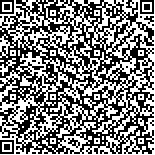| 摘要: |
| 采用微卫星遗传标记技术对山东近海牙鲆自然群体和养殖群体的遗传多样性进行了研究。实验所用牙鲆于2003年5月分别采自山东近海和青岛胶南养鱼场,各20尾,取全血或肌肉组织,以酚-仿抽提方法提取基因组DNA,利用筛选获得的10对微卫星引物进行PCR扩增,反应产物经8% 非变性聚丙烯酰胺凝胶电泳分离、EB显色,用ImageMasterlD Elite(version3.01)软件分析电泳结果,并计算了相应的遗传学参数。结果表明,在自然和养殖群体中,10个基因座位的等位基因平均数(a)分别为6.7和6.1,每个基因座位有效等位基因数(ae)分别为1.8—6.8和2.5—6.7,群体平均杂合度(H)分别为0.8120和0.7310;两个群体间的遗传相似性系数、遗传距离和基因分化系数为0.8558、0.1557和0.0558;自然群体内每个座位上的多态信息含量(PIC)为0.59—0.84、个体识别率(DP)为0.54—0.86、非父排除率(PPE)为0.41—0.72,其累积个体识别率和非父排除率均达到0.9999,表明所选座位属中高识别力的遗传标记,可以将它们应用于今后牙鲆雌核发育群体的遗传变异分析以及进一步的遗传育种的研究中。 |
| 关键词: 牙鲆,自然和养殖群体,微卫星,遗传变异 |
| DOI: |
| 分类号: |
| 基金项目:国家“863”项目资助,2002AA629160号;国家自然科学基金项目资助,30271036号 |
附件 |
|
| GENETIC VARIATIONS AT TEN MICROSATELLITE LOCI IN NATURAL AND CULTURED STOCKS OF LEFT-EYED FLOUNDER PARALICHTHYS OLIVACEUS IN SHANDONG COASTAL WATERS |
|
WANG Wei1,2, YOU Feng1, GAO Tian-Xiang2, ZHANG Pei-Jun1
|
|
1.Institute of Oceanology,Chinese Academy of Sciences;2.College of Life Sciences and Technology,Ocean University of China
|
| Abstract: |
| Microsatellite, or Short Tandem Repeats (STRs), is one of the most efficient marker systems serving as a useful tool for various genetic studies, such as population genetics study, quantitative trait locus identification, parentage and kinship analysis, genetic linkage mapping, and so on. Left-eyed flounder P.olivaceus is a flatfish species widely distributed in the North Pacific and is becoming increasingly important cultured marine fish species in China, Japan and Korea. In this study, 20 natural and 20 cultured individuals were collected from Shandong coastal waters in the Yellow Sea and a fish farm in Jiaonan of Shandong Province in May of 2003. Genomic DNA was isolated with the phenol-chloroform method from muscle tissue or whole blood. The genetic variations of the two stocks of P.olivaceus were assessed at 10 microsatellite loci. Nine (Po1, Po13, Po33, Po35, Po42, Po48, Po56, Po89, Po91) of them were selected from 16 loci, which were isolated by Sekino et al in 2000. Po-strl primers were designed using Primer Premier 5.0 according to the microsatellite sequence of P.olivaceus from GenBank. The amplification was performed in an Eppendorf Mastercycler PCR reactor. The products were analyzed by electrophoresis in a 8% non-denatured polyacrylamide gel with 1×TBE buffer, stained with ethidium bromide. The electrophoretic patterns were analyzed by ImageMasterl D Elite (Version 3.01) software. The results showed that the number of effective alleles (ae) of each loci in the natural and cultured stocks were 1.8—6.8 and 2.5—6.7; average number of alleles per locus were 6.7 and 6.1 and values of average heterozygosity (H) were 0.8120 and 0.7310 respectively. Genetic similarity (I), genetic distance (D) and coefficient of gene differentiation (GST) between these two stocks were 0.8558, 0.1557 and 0.0558, respectively. Compared with allozyme and RAPD, microsatellite markers enable great genetic differentiation and provide more alleles. The average heterozygosity of cultured stock was lower than that of natural stock just like the results from other genetic analysis, which indicated that inbreeding in aquaculture caused decrease of genetic diversity. However, there was no significant differentiation between natural and cultured stocks in the number of effective alleles (ae) of each locus suggesting that the natural stock of P.olivaceus was going through a decrease of some alleles, especially some low-frequency alleles. This may be a result of overfishing, escape of cultured fish offspring to the natural environment and intentional releasing. The value of polymorphism information content (PIC), power of discrimination (DP) and probability of paternity exclusion (PPE) were 0.59—0.84, 0.54—0.86 and 0.41— 0.72 at the 10 loci of the natural stock, respectively. The results indicated that the 10 microsatellite loci selected were very sensitive and could be used in parentage and kinship determination of the artificial gynogenetic stock of left-eyed flounders and further genetic breeding studies. |
| Key words: Paralichthys olivaceus, Natural and cultured stocks, Microsatellite, Genetic variation |
